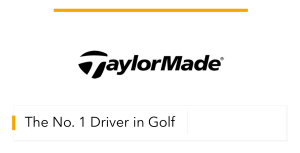Is It Time to Rethink Meetings? Most Experts Say Yes
It’s boon times in meetings and events: Just try booking a group at a popular destination for 2023. While many event planners seem happy to go back to the traditional event format, most motivational meetings experts interviewed say it’s time to rethink the format to focus more time on interactions, and less on plenary and panel discussions.

- It’s Difficult to Step Back When Business Is Booming
- It’s Time to Rethink Meetings
- There’s Room for Both Conference Rooms and Experiences
- The Format Must Change
Enjoying a rapid and easy-to-predict resurgence in motivational meetings and incentive travel once more people feel safe, many companies are happy to return to the traditional program format with only in some cases a hybrid component, according to interviews with motivational travel experts. They say that business is booming and that many are going back to the tried-and-true format of keynotes, panels, and breaks, when in fact many feel today’s attendee is clamoring for an entirely new experience.
Stephen Cook, Founder of Lorandus Meetings and Communications, an Ontario, Can.-based motivational events business and trustee of the Incentive Research Foundation, observes that the business is rebounding fast because “100% retention and recognition have never been more important. I have seen no reduced use of the keynote, panel discussion format, and I have attended two meetings recently at which both were employed in the same fashion pre-pandemic.” Cook sees a surge in a return to face-to-face because “people have screen fatigue. It is absurd to think that we will not return in-person and face-to-face with the same gusto as before the pandemic. For larger global audiences, the screen format will be an option but there will be a net loss of engagement and cultural impact for those who attend that way.”
The only constraints on meetings growth, he believes, is the “green surge” leading some companies to discourage travel through various means. Reducing travel “is not as simple as replacing in-person tellers with ATMs,” he points out. “That is about convenience and cost reductions, which has nothing to with the impact of face-to-face events, which is the power of interpersonal relationships to drive behavior change and performance.”
It’s Difficult to Step Back When Business Is Booming
Few people have more experience in the motivational events business than Patrick Delaney, Managing Partner of Soolnua, a Dublin-based destination marketing firm and past owner and/or executive with leading destination management firms for decades. He believes it’s time for a fundamental change in the motivational event format. “Frankly, the industry lost so much money, we’re like a child going back into a sweetshop. It’s not an environment in which people are standing back and reassessing, but that shouldn’t stop us. We must look at what is happening with a new generation of attendees. While it’s tempting to go back to the old format, I believe it’s time to re-imagine meetings. Purpose is critical. Without a purpose in an organization and an established culture that resonates, you won’t be able to achieve true engagement. You won’t get everyone on the same page.”
Lincoln Smith, Chief Strategy Officer of HMI Performance Incentives agrees. In a recent interview, he told RRN: “We believe that building corporate social responsibility and meaningful experiences into our event formats instills a greater sense of common purpose.”
It’s Time to Rethink Meetings
To accomplish organizational alignment, Delaney continues, “you must look at what people really want and that is to connect face-to-face. What motivates all generations are experiences, and we want those experiences to be transformative in a real and active way. The design of meetings must change to put much more focus on the time dedicated to interactions—roundtables, shared experiences, business or other exercises. Use of the keynote is a lazy design feature. You are paying more money than needed, and there’s no guarantee of sustainable engagement.” The No. 1 rule, he stresses: start with the purpose of the meeting and the audience before conceptualizing the format or content.
.”
Delaney believes that the shift to more experiential motivational events was already occurring before the pandemic, which has only accelerated the shift. “There was already huge movement to rethink the conference or exhibit center as a destination space to truly create a community. It’s a different meeting space footprint that puts more emphasis on interaction and circulation, and less on auditoriums and meeting rooms and big displays. Without dialog during an event, people will just go back to looking at their smart-phones or laptops.”
What has changed? “We want choice. We are not going to be sheep. Participants are now on the main stage, not the speakers. We attend events to build relationships, have more intimate conversations, deeper interactions.” When planning meetings, companies should be thinking about people, measurement, profit, and effectiveness in achieving stated goals, he advises.
Rick Garlick, Chief Research Advisor of the Incentive Research Foundation and Principal Consultant for Richard Garlick and Associates, a research firm, concurs, “We see a desire for flexibility and individuality. This was happening before the pandemic. Not everyone likes the same thing, so the movement already was away from large, one-size-fits-all experiences to smaller more individualized experiences at which people had choices and options as to what experiences they’d like to share with others. That’s something that is here to stay.”
He continues, “People never lost the desire to travel and connect with people even during the height of the pandemic. Many people were, and some probably still are, reticent to be with large groups. What we saw in the previous wave is that an overwhelming majority of people see group and individual travel as highly motivating. We see people preferring to go to more outdoor locations (e.g., beaches, mountains, adventure travel) than to large, crowded cities. There’s still some reluctance among some to gather in large groups but perhaps that will ease with time.”
There’s Room for Both Conference Rooms and Experiences
The IRF’s Chief Academic Advisor Allan Schweyer is not surprised by the resurgence of motivational events and sees a happy marriage ."the old and new formats. “You can still have a day of keynotes, panels, and roundtables, or business exercises to stimulate thinking, and then have two or three days of experiences, hiking a volcano, swimming in a lagoon, or other interactive activities where people can share what they learned. What are people doing as they share these experiences? They are making connections, talking about business, about what was discussed at the meetings.” Schweyer also remains a proponent of trade shows. While agreeing there might be ways to conduct trade shows more cost effectively, he says: “It’s highly productive to get out on a trade show floor and be able to circulate among so many companies, get demonstrations and listen to what people have to say. Where else can you meet so many solutions in one place and at one time?”
Long-time motivational event business owner Mike May, a principal of Dallas-based Brightspot Incentives & Events, says that “group travel will explode. People long for interaction. Companies see the benefits for top achievers mingling with senior management. All the benefits relate to the race for talent and development, and meetings and incentive travel do that."
The Format Must Change
He agrees with those who say the format must change. “Consider shortening the traditional time spent in keynotes and panels and increasing the time spent encouraging interaction. That’s what people want. Keynotes and panels have a place in terms of setting the stage for discussions, but the real action occurs when people are together sharing experiences.”
He observes that “conference calls have been replaced by video calls. They are good for an hour. Beyond that fatigue sets in. Video is good for short-term interactions, but for longer meetings, nothing is better than face-to-face. Travel for sales purposes is coming back big.” It’s the transient, routine touch-base business travel that may recover more slowly, he points out.
May agrees with others who say that hybrid meetings will have limited appeal. “There is a place for perhaps a live kick-off streaming session with an open audience, or recording events for later on-demand access, but a hybrid meeting is essentially running two meetings in parallel. When companies see the cost, they will seriously analyze the return on investment.”
Cook of Lorandus is also skeptical about the long-term prospects for fully hybrid meetings. “The jury is out. Hybrid means two meetings: one that is face-to-face and one that is on-screen. That means two communications strategies, two production budgets. I cannot think of anything that is less authentic than a ‘hybrid’ meeting.”
Click here to get RRN news delivered each week.
Education, Certifications, and Information to Activate
Brand Media and Enterprise Engagement
A complete learning, certification, and information program and a course syllabus for educators.
Resources: The Brand Media Coalition, the only guide to the story-telling power of brands and where to source them for business, event, promotional gifting, and rewards and recognition. Enterprise Engagement Solution Provider Directory. The only directory of engagement solution providers covering all types of agencies and tactics as well as insights on how to select them.
Communities: The Enterprise Engagement Alliance and Advocate and the Brand Media Coalition free resource centers offering access to the latest research, news, and case studies; discounts, promotions, referrals, and commissions, when appropriate to third-party solution providers from participating coalition solution provider members.
Training and Certification
Enterprise Engagement Alliance Education: Certified Engagement Practitioner; Advanced Engaged Practitioner, and Certified Engagement Solution Provider learning and certification programs on how to implement Stakeholder Capitalism principles at the tactical level.
International Center for Enterprise Engagement: The only training and certification program for ISO 30414 human capital reporting and ISO 10018 quality people management certification.

The EEA offers a complimentary course syllabus for educators.
In Print:
This is the definitive implementation guide to Stakeholder Capitalism, written specifically to provide CEOs and their leadership teams a concise overview of the framework, economics, and implementation process of a CEO-led strategic and systematic approach to achieving success through people. (123 pages, $15.99)

The first and most comprehensive book on Enterprise Engagement and the new ISO 9001 and ISO 10018 quality people management standards. Includes 36 chapters detailing how to better integrate and align engagement efforts across the enterprise. (312 pages, $36.)
Online:
10-minute short course: click here for a 10-minute introduction to Enterprise Engagement and ISO standards from the Coggno.com learning platform.
Services:
• The Engagement Agency at EngagementAgency.net, offering: complete support services for employers, solution providers, and technology firms seeking to profit from formal engagement practices for themselves or their clients, including Brand and Capability audits for solution providers to make sure their products and services are up to date.
• C-Suite Advisory Service—Education of boards, investors, and C-suite executives on the economics, framework, and implementation processes of Enterprise Engagement.
• Speakers Bureau—Select the right speaker on any aspect of engagement for your next event.
• Mergers and Acquisitions. The Engagement Agency’s Mergers and Acquisition group is aware of multiple companies seeking to purchase firms in the engagement field. Contact Michael Mazer in confidence if your company is potentially for sale at 303-320-3777.
Enterprise Engagement Benchmark Tools: The Enterprise Engagement Alliance offers three tools to help organizations profit from Engagement. Click here to access the tools.
• ROI of Engagement Calculator. Use this tool to determine the potential return-on-investment of an engagement strategy.
• EE Benchmark Indicator. Confidentially benchmark your organization’s Enterprise Engagement practices against organizations and best practices.
• Compare Your Company’s Level of Engagement. Quickly compare your organization’s level of engagement to those of others based on the same criteria as the EEA’s Engaged Company Stock Index.
• Gauge Your Personal Level of Engagement. This survey, donated by Horsepower, enables individuals to gauge their own personal levels of engagement.
For more information, contact Bruce Bolger at Bolger@TheEEA.org, 914-591-7600, ext. 230.

.jpg)














